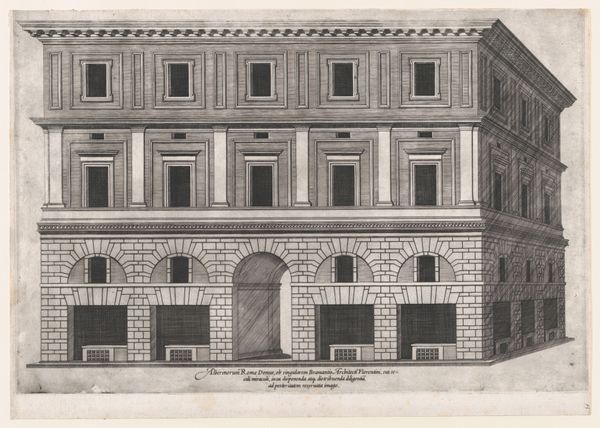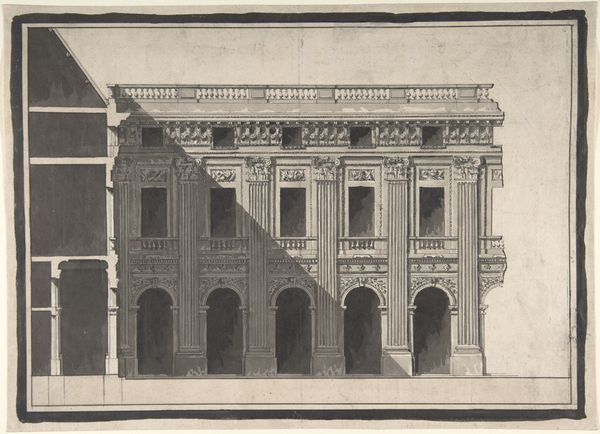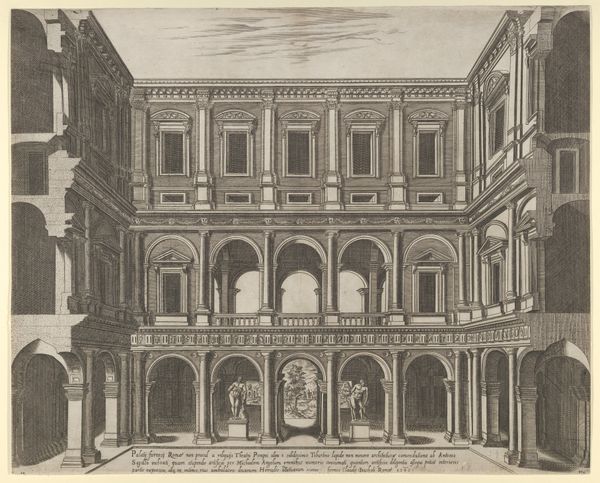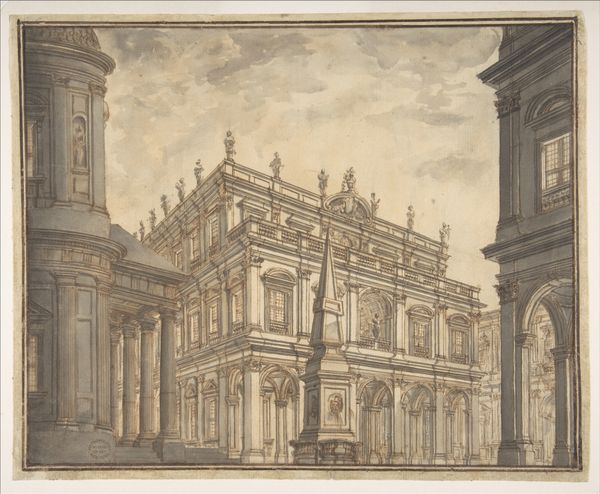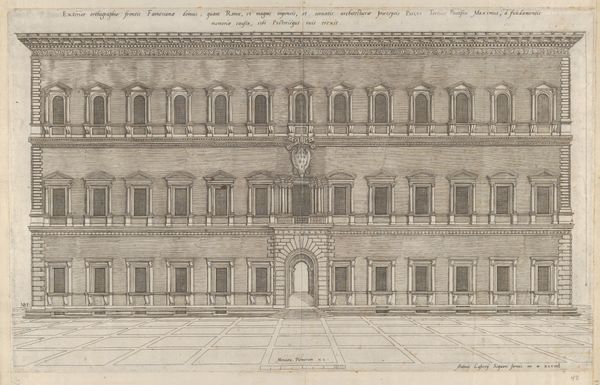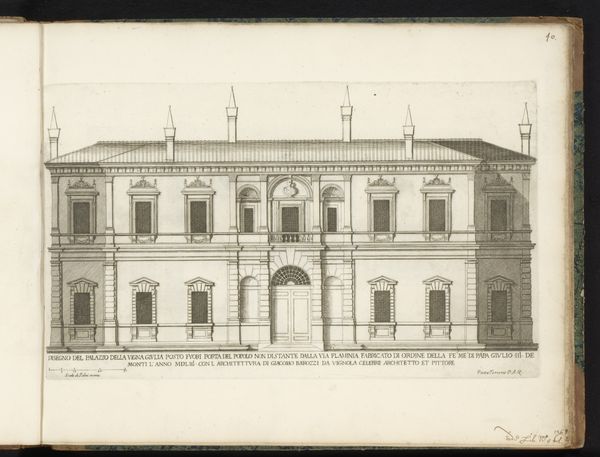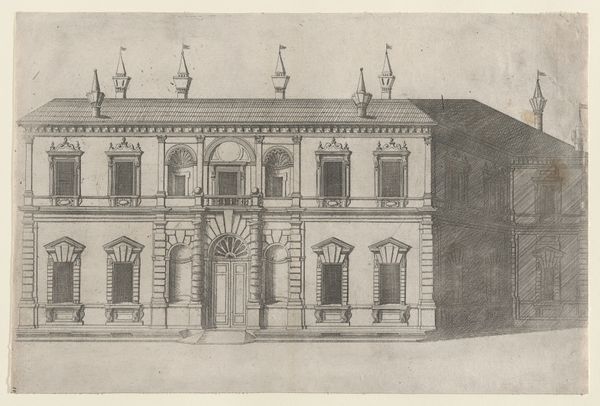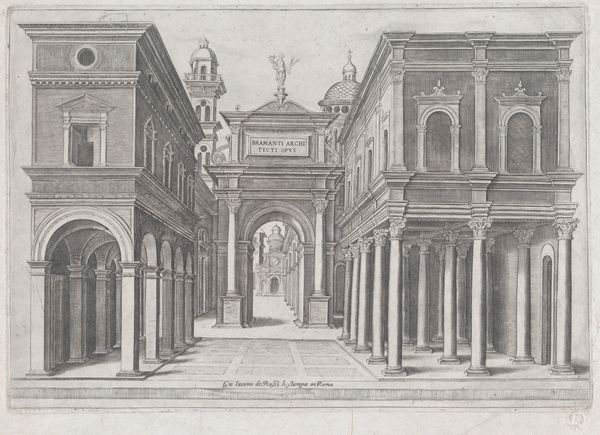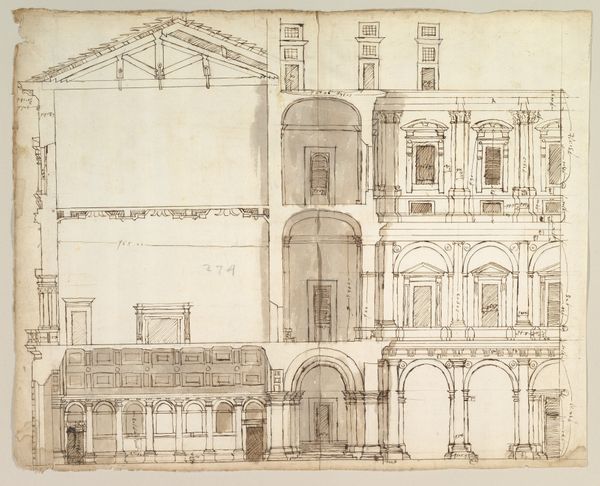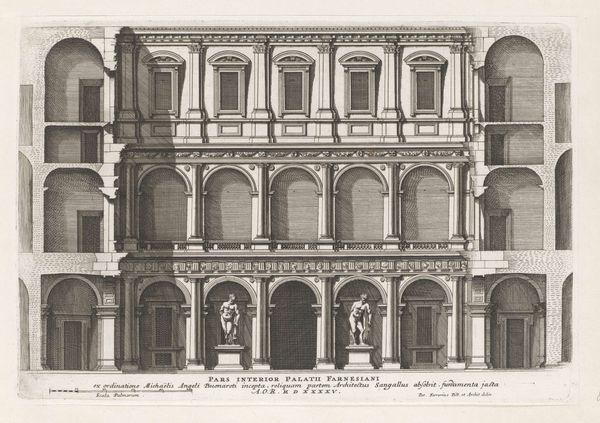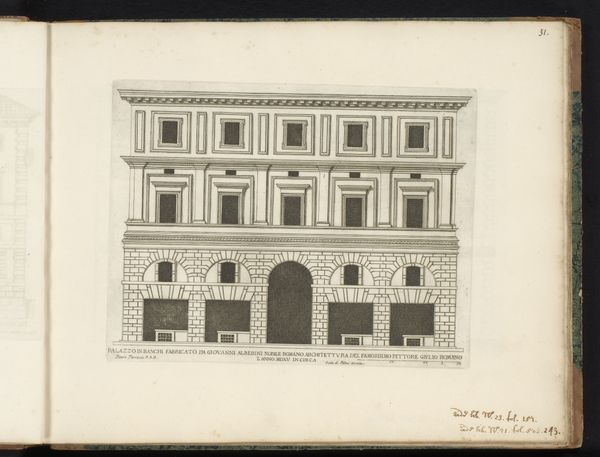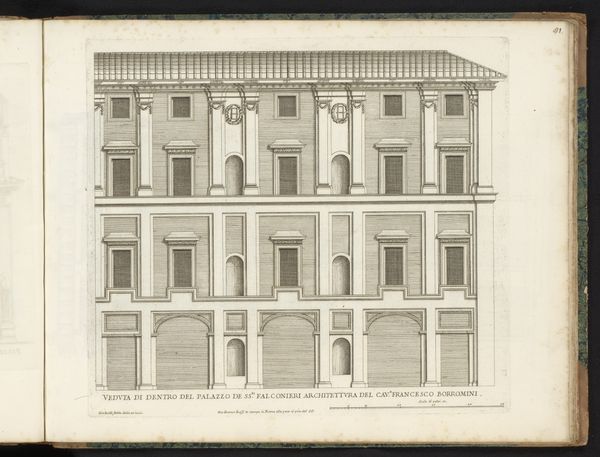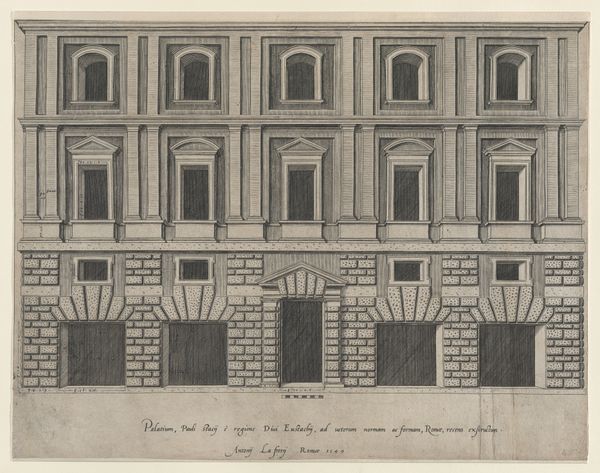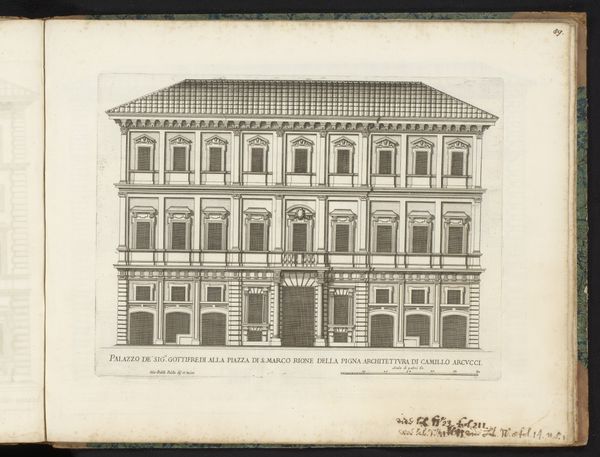
drawing, print, pencil, architecture
#
architectural sketch
#
drawing
# print
#
sculpture
#
landscape
#
geometric
#
pencil
#
italian-renaissance
#
watercolor
#
architecture
Dimensions: 13-1/4 x 8-1/4 in. (33.7 x 21 cm)
Copyright: Public Domain
Curator: Good morning. We’re looking at an architectural drawing here at the Met, entitled "Project for a Public Building on a Square". It's attributed to an anonymous artist from around 1500 to 1600. Editor: Imposing! The severity of the classical lines is only slightly softened by the watercolour washes, which are applied with amazing precision. The building dominates the space. What was it meant to be? Curator: We don’t know the original intention. The design adheres to a rather standard, academic exploration of Renaissance architectural ideas prevalent at that time. The arches, the pedimented windows, the careful symmetry - it speaks of order and civic dignity. It shows, doesn’t it, a deep understanding of classical ideals adapted to a contemporary idiom. Editor: The repetitive archways create such a strong visual rhythm and their cool precision makes it read as somehow...oppressive. It lacks playfulness; perhaps such structures were part of an agenda. This could be tied to civic projects aimed at projecting an image of power and control during a period of social upheaval. Or not. Curator: I concur about the repetition of forms and about the importance of geometric principles at play. Semiotically, this facade transmits values of reason, permanence and hierarchy. See how your eye is directed upwards along those orthogonal lines toward a central vanishing point? It creates a sense of...inevitability. Editor: Which inevitably leads back to the power dynamics! The location of such buildings shaped daily life, influencing pedestrian flow, regulating commerce, controlling public gatherings. This drawing then offers us a lens through which to understand the period’s social codes as manifested in its planned urban spaces. It’s really about the visual rhetoric of authority! Curator: It certainly serves as a visual anchor, solidifying particular beliefs through line, form, and organization on the picture plane. It seems incomplete somehow... but so very promising too. Editor: Promising yes, like many unfulfilled projects, offering a quiet critique. This sketch makes one wonder who these “anonymous” architects were who were imagining all these powerful buildings. What did their drawings say about the patrons of the time? It's quite interesting to consider.
Comments
No comments
Be the first to comment and join the conversation on the ultimate creative platform.
